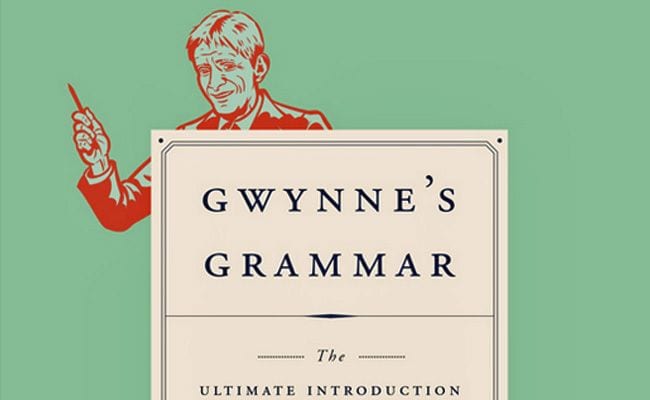
“For genuine thinking we need words.
Thinking can not be done without words”
— N.M. Gwynne
“I can say with complete safety that what you have in your hands is a thoroughly practical little book” begins Gwynne’s Grammar: The Ultimate Introduction to Grammar and the Writing of Good English, before the author, N.M. Gwynne, goes on to elaborate how, ironically, it is, thanks to the internet, that he has been able to bring proper grammar to the masses. “In every case, I have been having to tackle English grammar with my pupils, either because it has been largely forgotten by my older pupils or because it has been ignored, most often completely, in the schools that my younger pupils attend or have attended,” he continues. A sad truth if there ever was one.
With its charming size, bold but elegant paper and a turquoise which evokes a piece of jewelry from Tiffany’s, Gwynne’s Grammar is presented like a delicate object, which undermines the fact that it’s an incomparable tool that should be treated as such. Gwynne is devoted both to the preservation of the proper English language and also to its use for higher aesthetic purposes. “Acquiring an effortless command of grammar, although normally the indispensable foundation of writing that is competent or better, is only part of the struggle in the process of learning to write consistently,” he explains, before adding that eventually one must know “how to develop a writing style capable of suiting any useful purpose”.
The preface of the book also clarifies Gwynne’s takes on gender, perhaps to make him sound hip, or perhaps to express how important it is to both preserve tradition, but also bend one’s beliefs in the name of equality. “I am compromising for only one of two times in this book” he says, before continuing on how, on occasion, he will recur to the pronoun “he” to refer to both men and women, a compromise he makes not before adding something that at first glance sounds quite controversial, “the word to indicate whether someone is male or female is ‘sex’ not ‘gender’” he adds, elaborating on how “gender” is “purely grammatical”. One might even say quite political, too, when approached like this.
The book is then divided into fascinating chapters, each of which encompass many grammatical rules, which are explained with enough clarity to be easy to follow, and stylishly enough so as to not be condescending. Gwynne’s dry wit and humor make this a quite pleasurable to read, even if one’s not particularly interested in anything specific. His explanation as to why the book has no drawings is hilarious, “the bane of almost every textbook on every single academic subject” he calls them, elaborating on how illustrations slow down the learning process, and might actually make readers stupid. He continues using a humorous tone as he insults Ezra Pound and T.S. Eliot and suggests that if certain things were “good enough” for Shakespeare, they might as well be good enough for us.
If the promises made in the book’s preface sound too grandiose, “I can safely say that you will emerge from [reading the book] a different person from the person you are now — and for the better — and all the more so, the more effort you put into mastering what is to be found in it,” he writes. As infuriating as that tone might seem to some, it’s undeniable to realize that even those who think of themselves as grammar freaks will be surprised to realize they’d been doing something wrong, or will be thrilled to be reacquainted with rules they learned years before. If anything, the book serves as a melancholy reminder of the passage of time, and how what once was proper, now seems old fashioned.
“Let no one be deceived into thinking that learning grammar is a luxury of relatively little importance,” recommends Gwynne, which seems like advice crafted specifically for the generation of LOLs and emojis, which the author asks that such forms of expression not be discouraged, because “even the most intelligent people seldom do get a completely accurate grasp of English,” he says. The fact that the book has three chapters dedicated to encouraging people to follow through with the reading and eventual practice of proper grammar, is both comedic and clever.
And yet, while Gwynne makes a point out of not infantilizing his readers, he does make a terrific use of font and font colors to highlight the elements that make Gwynne’s Grammar so essential and worthy of revisiting. Gwynne is also an advocate of memorizing. He suggests that we learn some of these rules by heart, but really with a book so lovely, we may just want to regularly refer to it as a guide.


![Call for Papers: All Things Reconsidered [MUSIC] May-August 2024](https://www.popmatters.com/wp-content/uploads/2024/04/all-things-reconsidered-call-music-may-2024-720x380.jpg)



